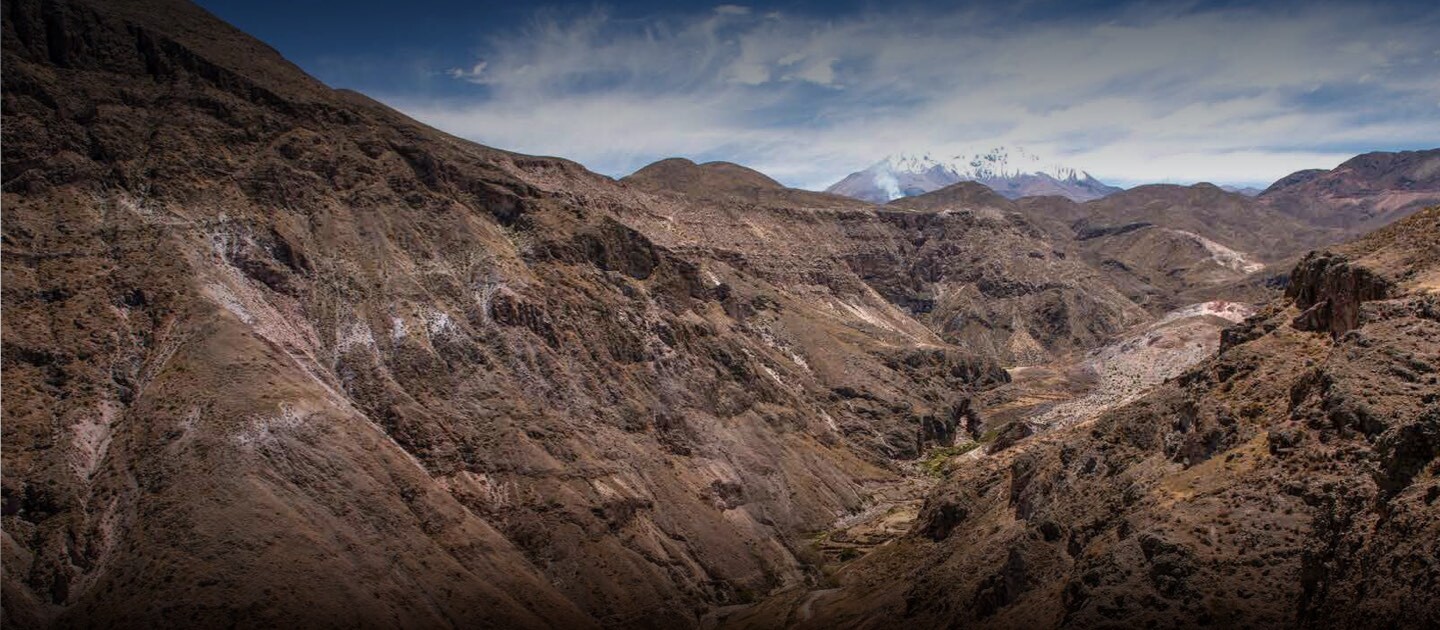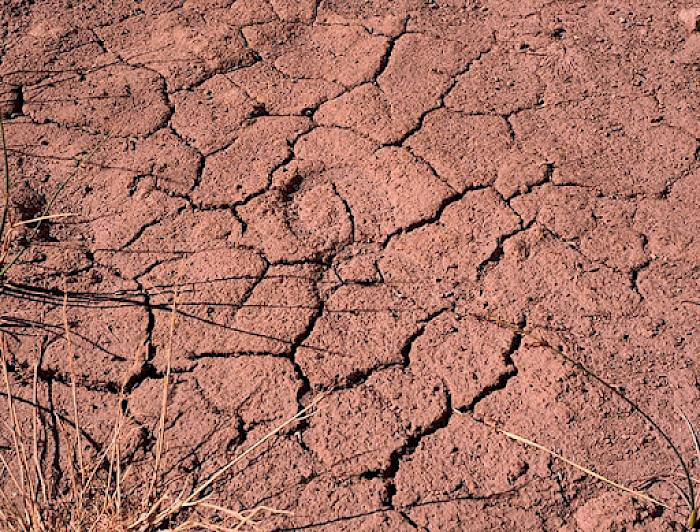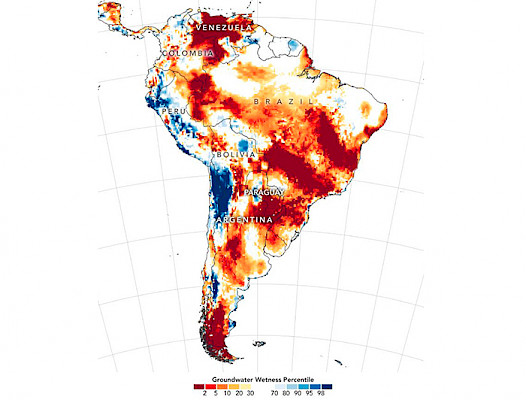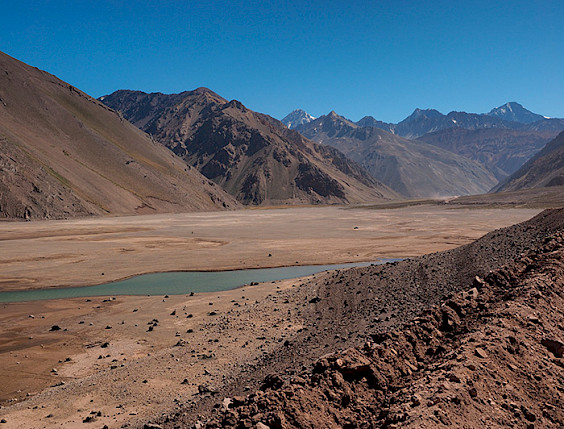
How to Deal with the Drought: the Fear of Water Rationing
Chile faces a significant water shortage, which could soon result in water rationing. A team of UC Chile professors and researchers decided to get together and seek solutions to tackle this adverse scenario.

photo_camera The scale of the problem has led a group of professors and researchers of the university to launch the "UC Drought Initiative," a joint and interdisciplinary effort between representatives of five faculties and three UC centres. (Photo: Nicole Saffie)
In March 2022, local media reported that almost half of Chile's municipalities (188) face a situation of water scarcity.
With a severe drought that has lasted for more than 13 years, several authorities have warned of the imminent possibility of water rationing in several cities, including the capital, Santiago.
The magnitude of the problem has led a group of Professors and researchers to launch the "UC Chile Drought Initiative", a joint and interdisciplinary project involving representatives of the Department of Hydraulic and Environmental Engineering of the Faculty of Engineering and the UC centers of Law and Water Management, Global Change, and the Atacama Desert.
Their objective is to study and monitor the phenomenon and provide concrete solutions and answers to face this complex scenario.
The initiative was launched on World Water Day through a seminar broadcast on the UC YouTube channel, featuring renowned national and international experts led by President Ignacio Sánchez.
"We find ourselves going through a decade-long mega-drought that requires us to take action and implement urgently, but in a planned manner, the necessary measures," said President Sanchez.
In his opening speech, he addressed the complexity of dealing with water scarcity and its multidimensional causes and impacts, such as climate change and economic losses.
However, he explained that "despite these difficulties, countries must design and implement appropriate and effective tools to manage drought", given the essential nature of water for society and the environment.
"A good way to commemorate World Water Day is with the development of this integration and monitoring platform. The university hopes all the stakeholders involved in drought management will take part as it would contribute to creating a more sustainable institutional framework and regulation in this area," added Ignacio Sánchez.
The "UC Drought Initiative" is based on the "Integrating Drought Monitoring and Public Policy Design Towards Proactive Drought Management" project, which won the National Research and Development Agency (ANID in Spanish) competition.
The submission of the project was overseen by the Department of Hydraulic and Environmental Engineering and involved the coordination of 16 professors from five faculties:
- Agronomy and Forestry;
- Engineering;
- Biological Sciences;
- Law
- and History, Geography and Political Science;
and three UC interdisciplinary centres:
The idea is to develop a digital platform through the information gathered from different sources and make it available to the community to inform about the country's drought situation in several geographical areas.
The project will also contribute to designing public policies for the proactive management of water scarcity.
Characteristics of a Collective Initiative

The government estimates that the country’s water availability has dropped 10% to 37% over the last 30 years and could drop another 50% in northern and central Chile by 2060.
According to professor Jorge Gironás -Director of the Department of Hydraulic and Environmental Engineering- historical data have shown that the average annual precipitation between 1961 and 2020 has been -27 mm per decade, impacting the country's national aquifers.
Additionally, the average temperature increased by 0.13 ºC per decade, increasing the drought.
Gironás, together with a team of researchers, conducted a study for the Chilean General Water Department (DGA, Spanish acronym) to improve drought management capabilities.
To this end, they conducted a comparative analysis of drought monitoring platforms from several countries.
"These platforms provide various services, such as monitoring, forecasting, specific and general information, and programmed responses," explained the professor.
For years Chile has quantified rainfall using only the data provided by DGA and the Chilean Meteorological Office.
However, other stakeholders have joined since, such as:
- the Institute of Agricultural Research,
- the Foundation for Fruit Development,
- the Center for Advanced Studies in Arid Zones (CEAZA, Spanish acronym),
- the Chilean Wine Consortium,
- and the National Air Quality Information System.
"We have seen continuous growth in the number of weather stations recording information. We have gone from around 100 stations to more than 1,000 stations throughout the territory during the last century, focusing on the central geographical area," said Gironás.
"There is a total and complete need for the community to have an open platform" that provides monthly information by specific areas. "This way, each user can get the information they are interested in. In addition, detailed information allows a user to make decisions," he added.
Daniela Rivera, professor at the Faculty of Law and director of the Center for Water Law and Management, emphasised that the initiative will better plan the country's response to this complex water scenario.
"The objective is to define ways to build public policies to manage the drought proactively and not reactively," said the professor. This joint effort is supported by foreign specialists from universities in the United States, Argentina, and Spain.
"This research has several objectives, such as developing and proposing an integrated monitoring and public policy framework for the proactive drought management, achieving an integrated characterisation of the drought, and presenting multivariate and spatially explicit drought indices in a drought platform or monitor," outlined Rivera.
"Furthermore, it seeks to formulate a portfolio of public policies to improve drought management and propose tools to guarantee safe water consumption by the population."
Lastly, it seeks to improve the resilience of various strategic economic sectors currently challenged by the drought.
Daniela Rivera and Jorge Gironás hope that more researchers and university members will join the "UC Drought Initiative."
A recent survey identified that 51 professors from nine faculties and 11 research centres are working on water issues, either in education or research.
The topics they address include:
- climate change,
- water and cities,
- water governance and planning,
- ecology,
- conservation and environment,
- socio-environmental conflicts and equity,
- natural risks and disasters,
- and new water sources.
"This Initiative can be expanded further," said Daniela Rivera.
Global Phenomenon

Two Spanish experts participated in the seminar to commemorate World Water Day:
- Sergio Vicente Serrano, scientific researcher at the Pyrenean Institute of Ecology,
- and Antonio Embid, professor at the University of Zaragoza and specialist in legal regulation.
"Drought is probably one of the most complex climatic phenomena," said Sergio Vicente Serrano. "Not only due to its physical mechanisms but also because it is difficult to quantify and determine when a drought begins and ends and the level of intensity."
According to Vicente Serrano, one of the main problems is the increase in water demand from the atmosphere.
"It has been increasing significantly in recent decades, since the 1980s, and is affecting all world regions, mainly due to temperature rise. It has increased 60 millimetres on average in the last 40 years," he said.
The problem with this higher demand is that it increases evaporation and leads to a loss in groundwater, lakes, and reservoirs, affecting crops and human consumption.
This increase also affects plant water stress and can lead to forest mortality. It also leads to a decrease in photosynthesis and carbon uptake by plants so that plants can now die from both lacks of carbon and thirst.
"From a pluviometric point of view, we do not observe noticeable changes in the world, but the increase associated with atmospheric demand could imply that droughts are becoming more severe," concluded Serrano.
Meanwhile, Antonio Embid highlighted the importance that law changes could have in the planning and management of water resources in a scenario of increasing scarcity and its particular relevance in the context of the constitutional debate that has taken place in Chile.
According to the academic, the forecasts are not encouraging when considering the world's population growth. "The International Renewable Energy Agency forecasts speak of a 55% increase in water consumption by 2050, an 80% increase in energy needs and a 60% increase in food," he said.
Laws around water must come from a water shortage point of view, like in Spain, as this allows the country to adopt proactive decisions. Given this scarcity, water should be defined as a public domain issue.
"The water use rights is a public matter, be it a law or through a concession," said Embid. The Spanish professor adds the importance of water use rights linked to hydrological planning.
"Concessions should be granted following the law and regulations and following hydrological basin planning," he explained, adding that "when the resource is misused, a sanction must be applied."
"Water scarcity, when it is structural, is usually the result of inefficient management by public administrations," said Embid.
He believes that planning must link and coordinate the various stakeholders and authorities involved in the administration and use of water and drought management.
"The management of droughts requires a clear coordination between the entities that manage water and those responsible for agriculture and energy."


